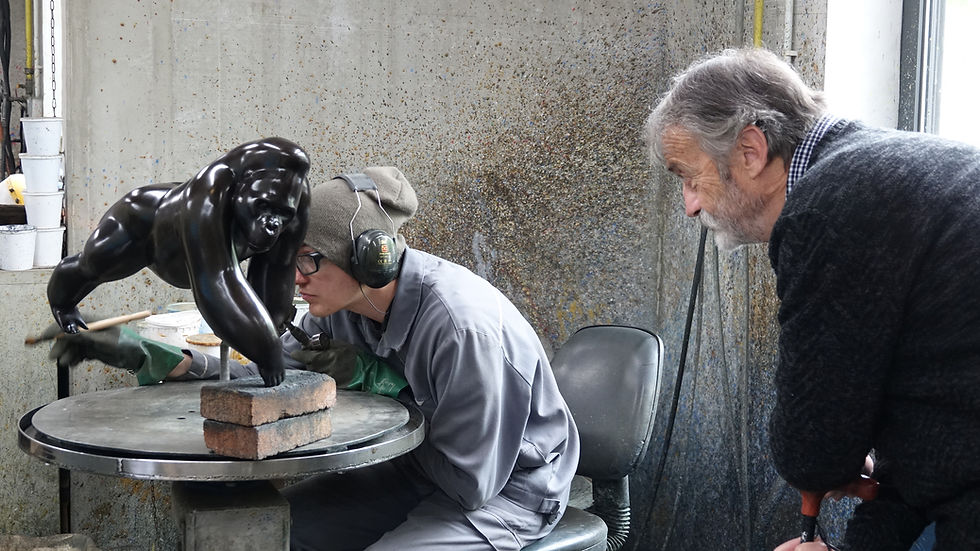Bronzes: the sand casting technique
- sculpturebass
- Aug 24, 2023
- 2 min read
In the world of art foundry, there are two techniques for making bronzes: lost wax or sand casting. Find out more about this second process, which is particularly well-suited to large-scale works.

The mould
Made directly on the sculpture, the mould is made from silica-clay sand, which hardens when compacted. It moulds perfectly to the shape of the work, from which protruding elements may have been cut out beforehand.
"Honey n°5" at the Venturi Foundry (Italy).
Once the mould has been formed using different layers of compacted sand, the original can be removed. A core is created in this imprint of the work. This creates a 'hollow' piece, to reduce its weight and cost.
Channels are then dug in the sand to allow the molten metal to flow through.

Mould ready for casting, at the Bocquel Foundry
Casting
Bronze ingots (an alloy of copper and tin) are placed in a crucible and heated to 1100° in a furnace. Once molten, the metal is poured into the mould in a single operation, through chimneys.
Casting the bronze at the Venturi foundry in Italy.

Bronze entrance fireplace.

Bronze cast at the Bocquel foundry.
Extracting
After cooling, the mould is destroyed to extract the part. It cannot therefore be reused.
"Le Parfum n°3" at the Fonderie BOCQUEL

"Le Parfum n°3" from the mould, at the BOCQUEL Foundry
Cleaning
The sculpture is then cleaned with a high-pressure water jet to remove the sand.

"Le Parfum n°3" at the Fonderie BOCQUEL
Chiselling
The deburrer removes any excess metal from the work.
"Le Miel n°5" at the Venturi Foundry
The various parts of the sculpture are welded together. The entire surface is then chiselled, to achieve a "smooth and taut" effect. On a monumental piece, this stage requires dozens of days' work.
"Le Miel n°5" at the Venturi Foundry
The patina
To obtain the desired colour, the part is heated and acids mixed with metal oxides are brushed on in successive layers. These oxidise the surface of the piece. The patina must be fine and translucent, to reveal the presence of the bronze. Finally, the piece is waxed to stop the oxidation and reveal its true colour.
"Le Parfum n°3" at the Fonderie Bocquel
Finished works
"Le Miel n°5" at the François POMPON Museum in Saulieu
"Le Parfum n°3" at Saint-Paul-de-Vence
The bronzes are then ready to be displayed, indoors or outdoors, for hundreds of years.
Find out more about all the stages involved in sand casting in this video produced by the Rodin Museum:



































Comments